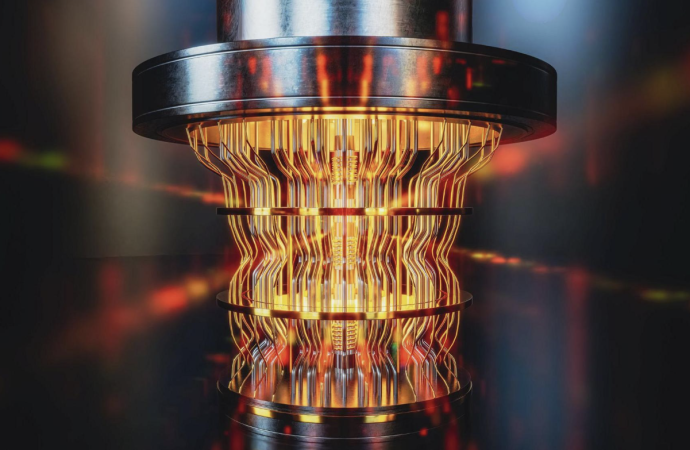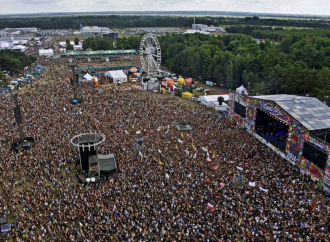Quantum computers are not just enhanced versions of regular computers—they are an entirely new kind of machine that operates on the bizarre principles of quantum mechanics. While conventional computers process information using binary digits (bits), which are either 0 or 1, quantum computers can handle 0s, 1s, and everything in between. This unique capability opens

Quantum computers are not just enhanced versions of regular computers—they are an entirely new kind of machine that operates on the bizarre principles of quantum mechanics. While conventional computers process information using binary digits (bits), which are either 0 or 1, quantum computers can handle 0s, 1s, and everything in between. This unique capability opens the door to solving problems that even the most advanced traditional supercomputers would struggle with.
To understand how quantum computers differ, let’s first consider how regular computers work. Your laptop or smartphone’s processor uses bits, which represent either 0 or 1. These bits act like switches, either on or off, and perform all the calculations needed for everything from streaming a video to running complex financial models. This system has served us well for decades and has powered massive advancements in computing. However, it starts to hit its limits as the problems we’re trying to solve require more memory and processing power.
Now, think about a quantum computer, which uses quantum bits, or qubits. A qubit can be 0, 1, or both at the same time, thanks to a phenomenon called “superposition.” If this sounds confusing, it’s because it is. Picture a coin spinning in the air: while it’s in motion, it’s neither heads nor tails, but a mix of both. In the same way, a qubit can represent multiple possibilities simultaneously until it’s measured. This strange behavior is a direct result of quantum physics.
But superposition is just one part of the story. Another key feature of quantum computers is “entanglement.” When qubits become entangled, their states become linked. This means that measuring one qubit affects the other, no matter how far apart they are. This phenomenon, famously called “spooky action at a distance” by Albert Einstein, allows quantum computers to process vast amounts of interconnected information at once, tackling problems that would cause a regular computer’s logic to break down.
When multiple qubits are used together, they don’t simply combine in the same way as regular bits. For example, two qubits can represent four different states at once, and three qubits can represent eight states. With each additional qubit, the number of states that can be represented grows exponentially. A 50-qubit quantum computer can hold over a quadrillion (10^15) possible states at once, a level of complexity that even powerful classical computers would struggle to simulate. This means that a quantum computer with 50 qubits can solve problems that would be impossible for a 50-bit classical computer.
So, what does this mean in practical terms? Well, quantum computers have the potential to speed up solutions to complex problems that classical computers can’t handle efficiently. For example, they could help analyze huge datasets, like identifying climate trends or analyzing genetic data for medical research, much faster than regular computers can. Traditional machines often struggle because the complexity of these problems increases far quicker than they can check each possibility. Quantum computers, using superposition and entanglement, can explore these possibilities much more effectively.
Take factoring large numbers, a key part of modern encryption systems. While classical computers can do this, the time it takes grows exponentially as the numbers get bigger. Some estimates suggest that it would take a classical supercomputer longer than the age of the universe to factor certain large numbers. A sufficiently advanced quantum computer, on the other hand, could solve these problems in just hours or days, a massive improvement.
Looking at the current state of quantum computing, we see that early quantum computers are still in the experimental phase, with limited qubits and stability issues. In 2020, researchers reached a milestone known as “quantum supremacy,” when a quantum computer solved a problem that would have taken classical computers too long. Since then, progress has been steady, with quantum machines hitting 100 qubits by 2023. Projections suggest that by 2030, we could see quantum computers with thousands of qubits.
Why the focus on so many qubits? Because real-world problems require both complexity and stability. Today’s quantum machines struggle with something called “decoherence,” where the delicate quantum states don’t last long. A small temperature change or even cosmic rays can disturb the qubits. As a result, each qubit might only hold its state for microseconds or milliseconds, creating a narrow window for calculations. To counter this, extra qubits are needed to maintain stability, and researchers believe that achieving millions of qubits could unlock game-changing advancements.
When comparing quantum computers to traditional supercomputers, it’s important to note that quantum machines aren’t necessarily faster in all areas. Instead, they excel at problems that are near impossible for classical systems, such as simulating quantum phenomena. Since quantum computers operate using the same principles they’re trying to simulate, they are much better suited for tasks like modeling molecular interactions in chemistry and materials science.
As for cost, classical computers are affordable and easy to operate. You can use a regular desktop or laptop without any specialized setup. Quantum computers, however, require extremely low temperatures, close to absolute zero, to keep the qubits stable. This means expensive cooling systems, specialized materials, and precise engineering, all of which drive up the cost. But just like classical computers became more affordable over time, quantum computers might follow a similar path. It’s hard to predict exactly how quickly this will happen, but given the investment pouring into quantum research, it’s clear that the potential rewards are huge.
Looking ahead, quantum computers have the potential to revolutionize fields such as drug discovery, optimization problems, climate modeling, and machine learning. For example, by simulating molecular interactions, quantum computers could speed up the process of developing new drugs, reducing the time and cost of pharmaceutical research. They could also help optimize complex tasks like scheduling flights, routing delivery trucks, and managing energy grids more efficiently than traditional algorithms.
However, there are still many hurdles to overcome. In addition to technical challenges like qubit stability and error correction, there’s a need for entirely new software and algorithms that can harness quantum power. Quantum programming isn’t the same as classical programming, and we can’t just adapt current code to work on quantum machines. Researchers are still figuring out how to write programs that can take full advantage of quantum mechanics.
Despite these challenges, the progress is undeniable. With each new breakthrough, from improving qubit stability to creating more efficient quantum algorithms, we’re moving closer to a future where quantum computers play a major role in science and technology. It’s not a question of if quantum computing will change the world, but when.

















Leave a Comment
Your email address will not be published. Required fields are marked with *